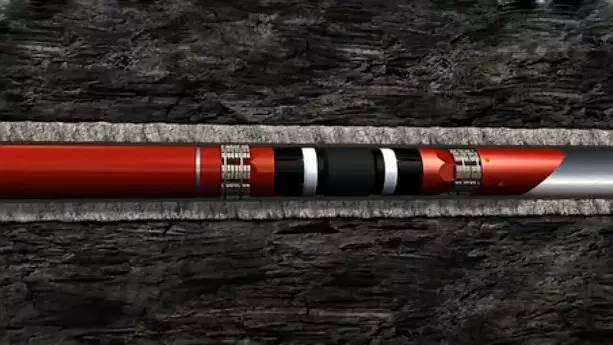07
casing repair
In the middle and late stages of oilfield exploitation, with the prolongation of production time, the number of operations and workovers increases, and casing damage will occur successively. After the casing is damaged, it must be repaired in time, otherwise it will lead to downhole accidents.
1. Inspection and measurement of casing damage
The main contents of the casing inspection are: the change of the inner diameter of the casing, the quality and wall thickness of the casing, the condition of the inner wall of the casing, etc. In addition, check and determine the position of the casing collar, etc.
2. Repair of deformed casing
The deformed casing is repaired by plastic surgery.
⑴Pear-shaped plastic device (also called tube expander)
The tube expander is lowered to the deformed well section, and the deformed part is gradually expanded depending on the bulging force of the drilling tool. The lateral distance that can be expanded each time is only 1-2 mm, and the number of tool replacements is large.
⑵ Casing shaper
This tool is used more and is a better shaper.
The casing shaper is a special tool used to repair the deformation of the casing in the well, such as flattening and depression, so as to restore it to a state close to normal.
The casing shaper consists of an eccentric shaft, on which there are upper, middle and lower rollers and a cone head, as well as balls and plugs for fixing the cone head. Put this tool on the deformed part of the casing, rotate it and apply appropriate pressure, forcing the cone head and roller to squeeze the deformed pipe wall of the casing outward with a large lateral force to make it reach the normal diameter and roundness.
Casing scraper: The casing scraper is used to remove any deposits, unevenness or burrs inside the oil well casing, so as to remove obstacles for future operations.

3. casing subsidy
Wells with perforated or cracked casings can be repaired with subsidy measures. The inner diameter of the repaired casing should be reduced by about 10mm, and the subsidy can be 10~70m in one construction.
⑴ subsidy management
The thickness of the subsidy pipe is generally a seamless steel pipe with a wall thickness of 3mm, with large longitudinal ripples, and a 0.12mm thick glass cloth wrapped around the pipe, cemented with epoxy resin, and each pipe is 3m long. When in use, the length of the lower pipe can be welded on site according to the design requirements, and the outer wall is coated with epoxy resin before going into the well.
(2) Subsidy tools
It is mainly composed of centralizer, sliding sleeve, upper striker, hydraulic anchor, piston barrel, fixed piston, piston, upper head, piston rod, stretching tube and tube expander.
4. Casing inside drill
Drilling inside the casing is mainly used to repair oil wells with serious failures downhole. It is difficult to be effective in dealing with such complex wells with general methods. Casing sidetracking technology must be used to restore dead wells and improve oil well utilization.
Drilling inside the casing is to fix a deflection device at a specific depth in the oil-water well, use the inclined plane to build up and guide the deflection, and use the milling cone to open a window on the side of the casing, drill a new hole through the window, and then lower the liner to fix it. Well set of craft. The casing inside drilling technology is the application of directional drilling technology in the overhaul of oil and water wells.
The main tools for drilling inside the casing include inclination setter, inclination feeder, milling cone, drill bit, drop joint, cementing rubber plug, etc.
Post time: Sep-06-2023








 Room 703 Building B, Greenland center, Hi-tech development zone Xi’an, China
Room 703 Building B, Greenland center, Hi-tech development zone Xi’an, China
 86-13609153141
86-13609153141


